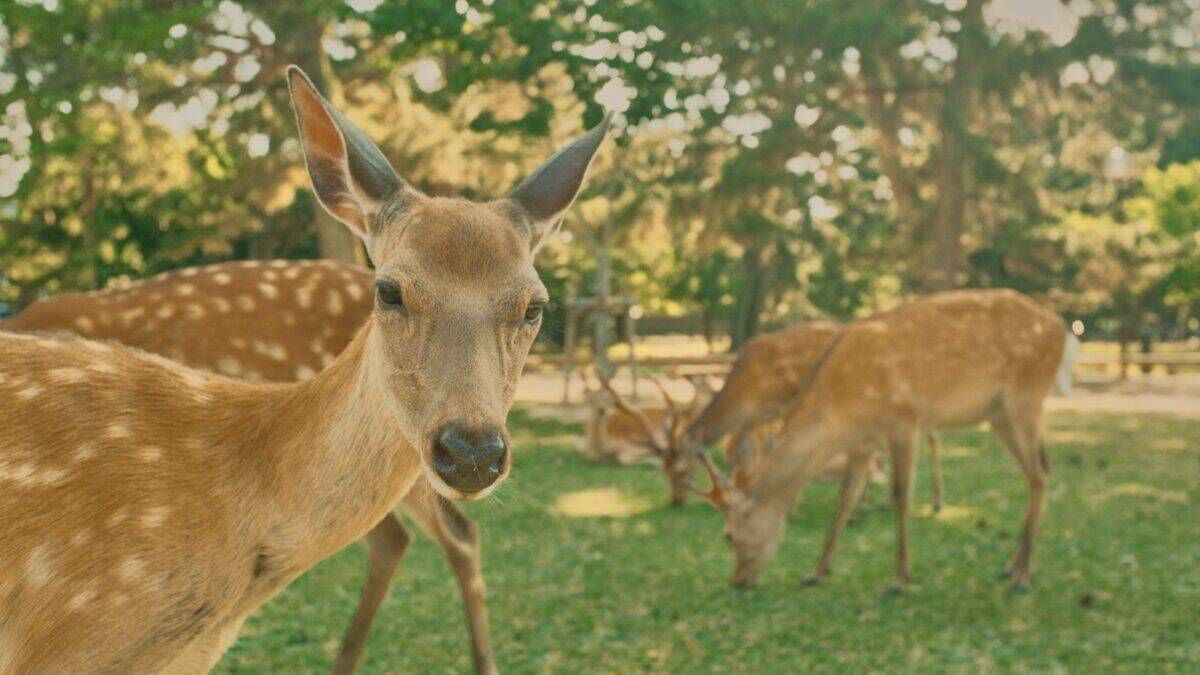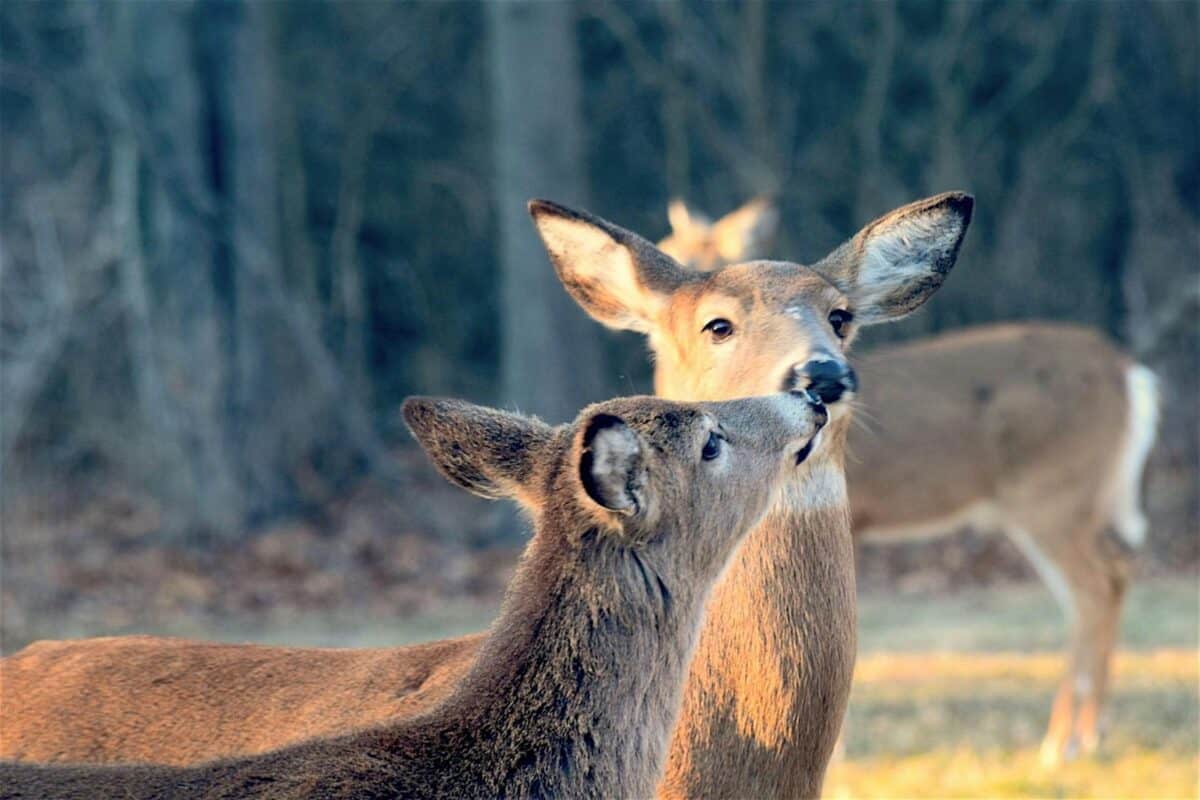The image of a peaceful deer grazing in a meadow is deeply embedded in our collective consciousness. With their wide eyes and delicate movements, these gentle herbivores have long been symbols of forest tranquility. However, recent observations have sparked a surprising question that challenges our fundamental understanding of these animals: Are some deer turning carnivorous? This seemingly outlandish question has genuine scientific merit, as researchers have documented multiple instances of deer consuming meat—behavior that contradicts their classification as strict herbivores. This article explores this fascinating phenomenon, examining the evidence, potential causes, and what it might mean for our understanding of animal behavior and evolution.
The Traditional Understanding of Deer Diet

Deer belong to the family Cervidae and are classified as ruminants—mammals with specialized digestive systems designed for processing plant matter. Their four-chambered stomachs contain microorganisms that break down cellulose, allowing them to extract nutrients from tough vegetation that many other animals cannot digest. Traditionally, deer diets consist primarily of leaves, twigs, grasses, fruits, nuts, and fungi. Their teeth are specifically adapted for grinding plant material, with flat molars perfect for crushing vegetation rather than tearing flesh. This physiological makeup has led scientists to categorize deer as obligate herbivores—animals that must eat plants to survive and that lack the digestive capabilities to process significant amounts of animal protein.
Documented Cases of Carnivorous Behavior

Despite their herbivorous classification, there have been numerous documented cases of deer consuming animal matter. In 2017, a white-tailed deer was photographed in North Dakota eating a human corpse at a body farm (a research facility where scientists study decomposition). Trail cameras have captured deer chewing on bird carcasses, eating eggs from ground nests, and even consuming smaller mammals. Perhaps most surprising was footage from 2015 showing a deer in Canada chasing, catching, and eating a bird. These aren’t isolated incidents—researchers have now compiled dozens of examples spanning different deer species across North America and Europe, suggesting this behavior may be more common than previously thought.
Nutritional Opportunism vs. True Carnivory

Before declaring deer as evolving carnivores, it’s important to distinguish between true carnivory and opportunistic scavenging. True carnivores have physiological adaptations specifically for hunting and digesting meat—features deer lack. What we’re observing is more accurately described as nutritional opportunism—deer taking advantage of easily available protein sources when encountered. This behavior doesn’t mean deer are becoming predators in the traditional sense, but rather that they’re more flexible in their feeding strategies than previously understood. Most instances involve scavenging already-dead animals rather than hunting live prey, though the bird-catching incident shows they are occasionally capable of more predatory behavior.
Mineral Deficiencies as a Driving Factor

One leading theory explaining carnivorous behavior in deer relates to mineral deficiencies, particularly calcium and sodium. These minerals are crucial for deer health but can be scarce in plant-based diets, especially in certain geographical areas or during winter months. Bones, in particular, are rich in calcium and phosphorus, which may explain why deer have been observed chewing on skeletal remains. Similarly, blood and flesh contain sodium—a mineral deer actively seek and for which they’ve been known to travel great distances. These nutritional needs might override their typical dietary preferences, driving them to consume animal matter when faced with deficiencies that could otherwise impact their health, antler growth, or reproductive success.
Seasonal Variations in Carnivorous Behavior

Researchers have noted that deer are more likely to exhibit carnivorous behavior during certain times of the year. Winter and early spring—when high-quality plant food is scarce—see increased reports of deer consuming animal matter. This timing coincides with periods of nutritional stress and higher energy demands, particularly for bucks recovering from the rut (mating season) or does preparing for pregnancy. It also corresponds with the time of antler growth in males, a process that requires significant calcium intake. The seasonal pattern supports the hypothesis that meat consumption is primarily a response to nutritional needs rather than a fundamental shift in deer biology or behavioral preferences.
Geographic Differences in Carnivorous Tendencies

Interestingly, carnivorous behavior isn’t equally distributed across all deer populations. Deer in certain regions—particularly areas with poor soil quality that produces vegetation with lower mineral content—appear more likely to seek animal protein. Island populations of deer, which often face more severe resource limitations, have shown higher rates of carnivorous behavior. For example, deer on the Channel Islands off California have been documented consuming seabird carcasses with unusual frequency. Similarly, deer in northern boreal forests with acidic soils (which produce vegetation lower in calcium) appear more prone to bone-chewing behavior than their counterparts in mineral-rich environments. These geographic patterns reinforce the connection between nutritional deficiencies and meat consumption.
The Evolutionary Perspective

From an evolutionary standpoint, this dietary flexibility may represent an adaptive advantage. While deer are specialized for herbivory, the ability to supplement their diet with animal protein when necessary could provide a survival edge during times of scarcity or environmental stress. Some evolutionary biologists suggest that strict dietary categories (herbivore, carnivore, omnivore) might be less rigid than previously thought, with many animals falling along a spectrum rather than into distinct categories. The carnivorous behavior we’re observing in deer might represent not a recent change but rather the expression of an existing but rarely observed adaptability that has helped deer species survive through changing environmental conditions over millions of years of evolution.
Physiological Limitations to Full Carnivory

Despite their occasional meat consumption, deer face significant physiological barriers to becoming true carnivores. Their digestive systems lack the concentrated hydrochloric acid found in carnivore stomachs, making protein digestion less efficient. They don’t produce the same spectrum of digestive enzymes that break down animal tissue, and their intestinal structure is optimized for extracting nutrients from plants through fermentation—a process that takes considerable time. These limitations mean that while deer can derive some nutritional benefit from meat, they cannot subsist primarily on animal protein. Attempting to do so would likely lead to serious digestive issues and nutritional deficiencies. This explains why even the most carnivorous deer still consume predominantly plant matter.
Implications for Wildlife Management

The recognition of carnivorous behavior in deer has important implications for wildlife management. Traditional deer management practices focus almost exclusively on plant-based food sources when assessing habitat quality and carrying capacity. If protein and mineral acquisition from animal sources plays a more significant role than previously understood, management strategies may need adjustment. For example, in areas where deer show signs of mineral deficiencies, wildlife managers might consider supplemental mineral provisions as an alternative to increasing harvest quotas. Understanding the full spectrum of deer dietary needs could lead to more effective conservation and management approaches, particularly in areas with nutritionally stressed deer populations.
Similar Behavior in Other Herbivores

Deer aren’t unique among herbivores in their occasional carnivory. Researchers have documented meat-eating in various traditionally herbivorous species, including horses, cows, sheep, goats, hippopotamuses, and even some birds like parrots. Like deer, these animals typically consume meat opportunistically rather than as dietary staples. This pattern suggests that dietary flexibility may be more common among herbivores than previously recognized. Some scientists propose that many herbivores maintain the physiological capability to digest small amounts of animal protein—a vestigial trait from distant omnivorous ancestors or an adaptive capacity that provides nutritional insurance during environmental stress. These cross-species parallels help contextualize deer behavior within a broader pattern of dietary adaptability in the animal kingdom.
Human Influence on Carnivorous Behavior

Human activities may influence the prevalence of carnivorous behavior in deer. Habitat fragmentation, climate change, and soil depletion from agriculture can all affect the nutritional quality of vegetation available to deer. As humans alter landscapes, we may inadvertently create mineral imbalances that drive deer to seek alternative food sources. Additionally, human presence creates novel food opportunities—from road-killed animals to improperly disposed fishing waste—that may introduce deer to animal protein they wouldn’t otherwise encounter. Some researchers speculate that deer in suburban environments, where they regularly encounter human food waste, may show greater dietary flexibility than their wilderness counterparts. These factors suggest that human-influenced landscapes might be inadvertently encouraging carnivorous tendencies in deer populations.
Scientific Debate and Future Research

The topic of carnivory in deer remains an active area of scientific inquiry and debate. Some researchers argue that these observations represent nothing more than extreme cases of opportunistic feeding with limited ecological significance. Others contend that we’re witnessing an important example of behavioral plasticity that challenges our understanding of dietary specialization. Resolving these questions will require more systematic research, including controlled studies of nutritional preferences, detailed analysis of wild deer diets across different environments, and closer examination of the physiological capacity of deer to digest and utilize animal protein. Advanced techniques like stable isotope analysis, which can reveal the proportion of plant versus animal matter in an animal’s diet over time, may prove particularly valuable in quantifying the true extent of carnivory in wild deer populations.
Conclusion: Redefining Our Understanding of Deer

The evidence for carnivorous behavior in deer challenges us to reconsider our understanding of these familiar animals. Rather than strict herbivores, deer might be better described as facultative omnivores—primarily plant-eaters capable of consuming and deriving nutrition from animal matter when beneficial. This flexibility doesn’t represent a dramatic evolutionary shift or the emergence of “vampire deer,” but rather illuminates the complex and adaptable nature of wildlife. As we continue to study this phenomenon, we gain not only insight into deer ecology but also a broader understanding of dietary adaptation in animals. The peaceful deer grazing in the meadow remains an accurate image—but we now know that same deer might, under certain circumstances, make a meal of a bird or rodent if the opportunity and nutritional need align. This revelation reminds us that even our most familiar wildlife can still surprise us, underscoring how much we have yet to learn about the natural world.
- The Forgotten Lake Where Flamingos Nest in the U.S. - August 23, 2025
- Coral Reefs of the Florida Keys: What’s Left and What’s Next - August 23, 2025
- Beginner’s Guide to Identifying Animal Tracks - August 23, 2025
